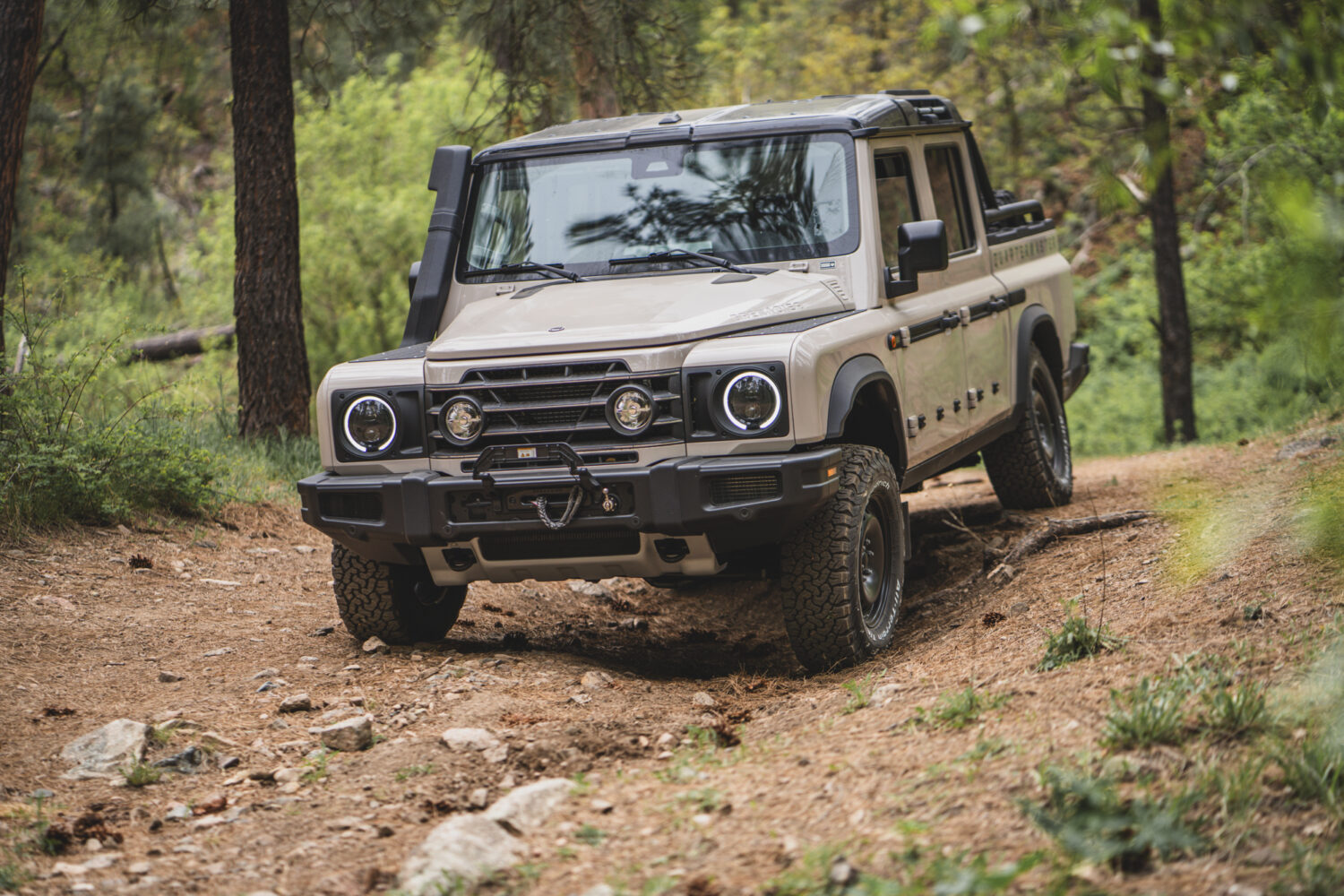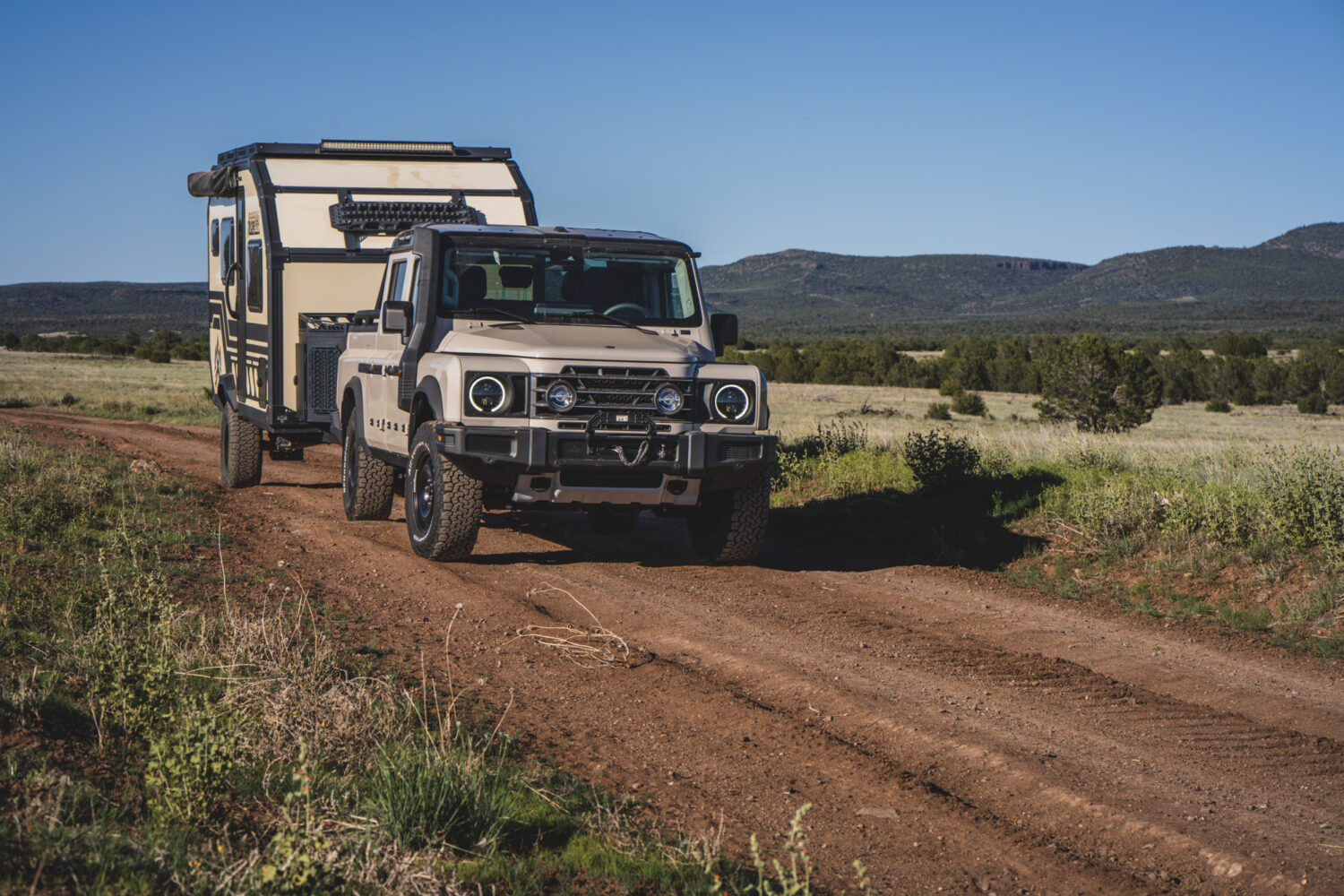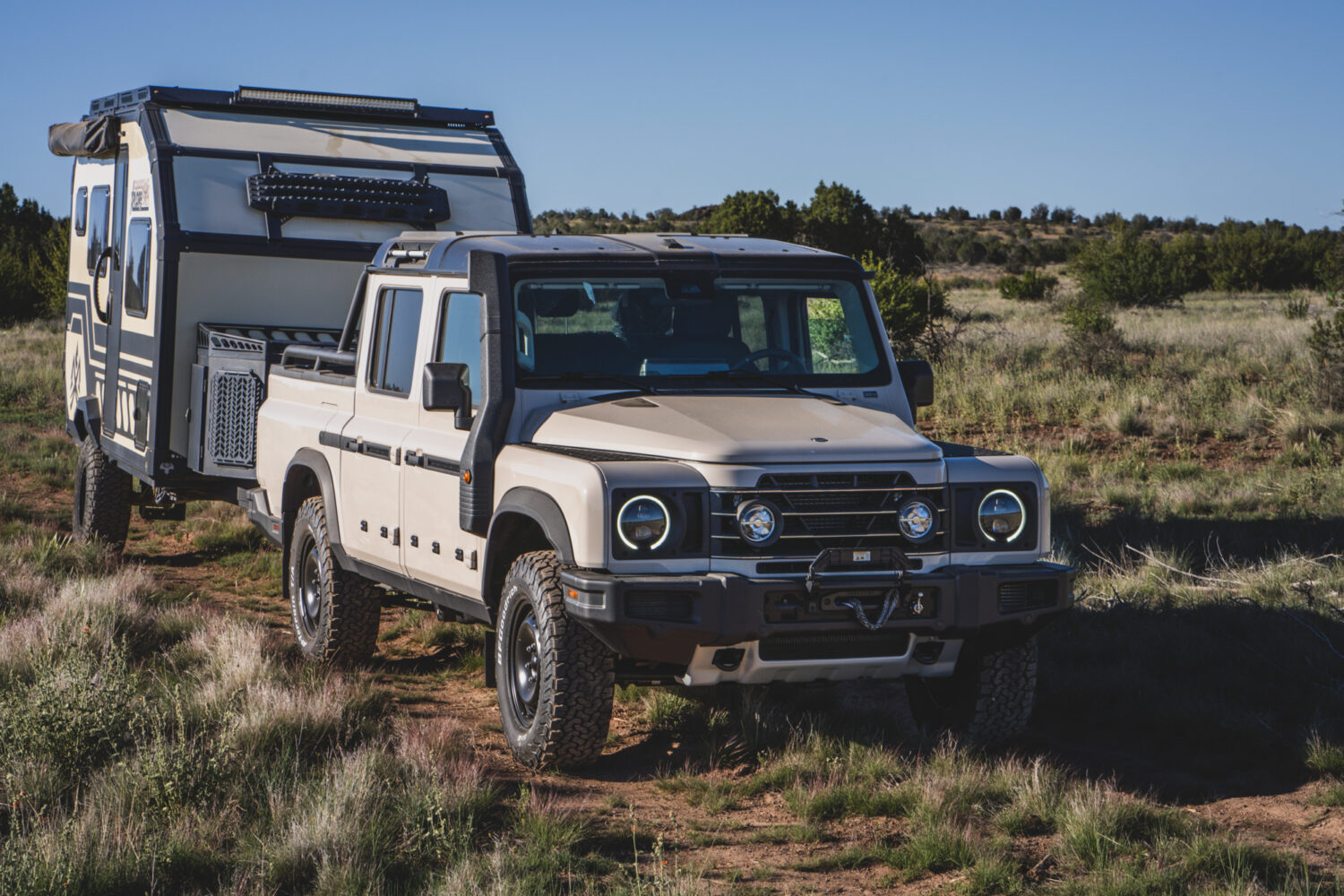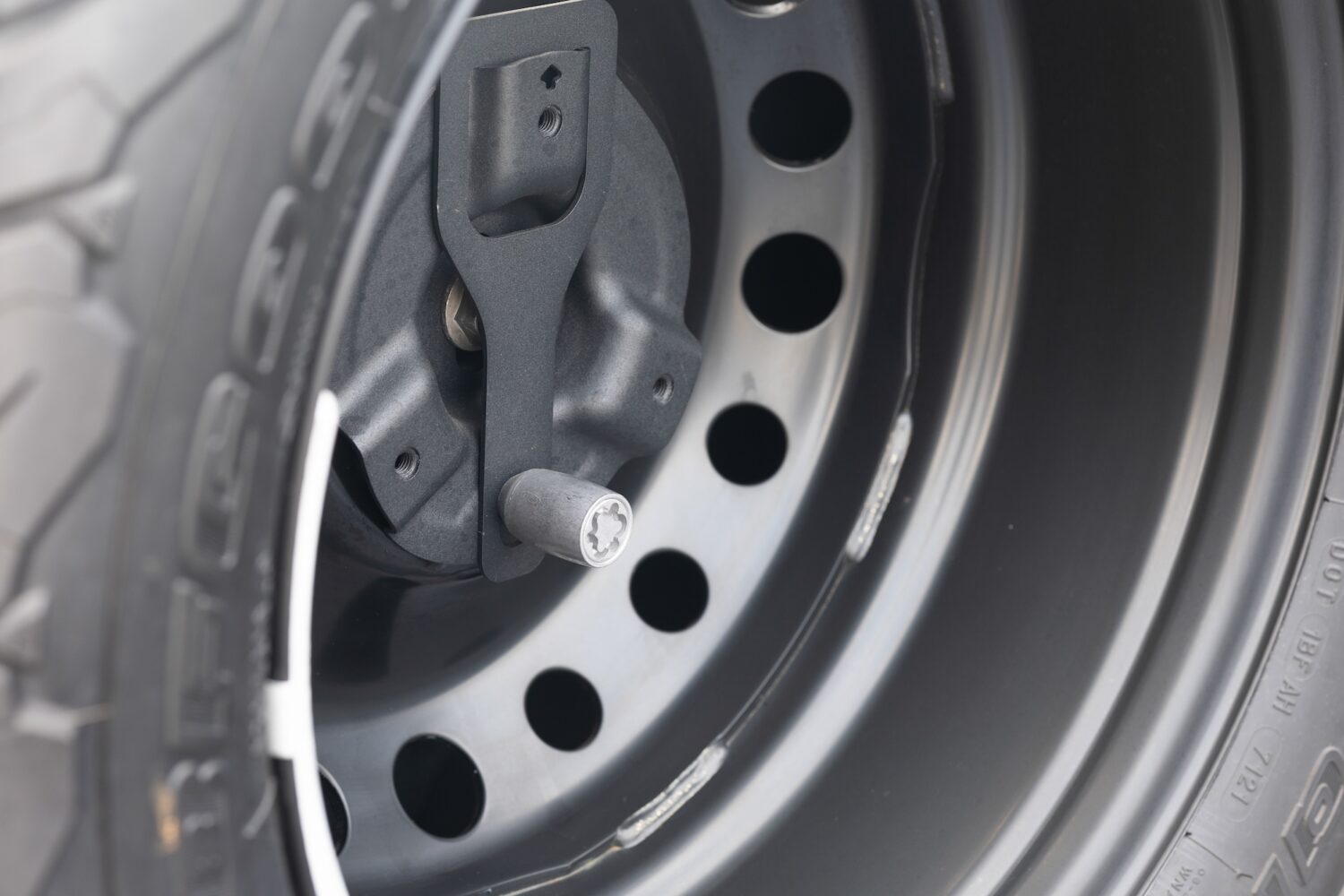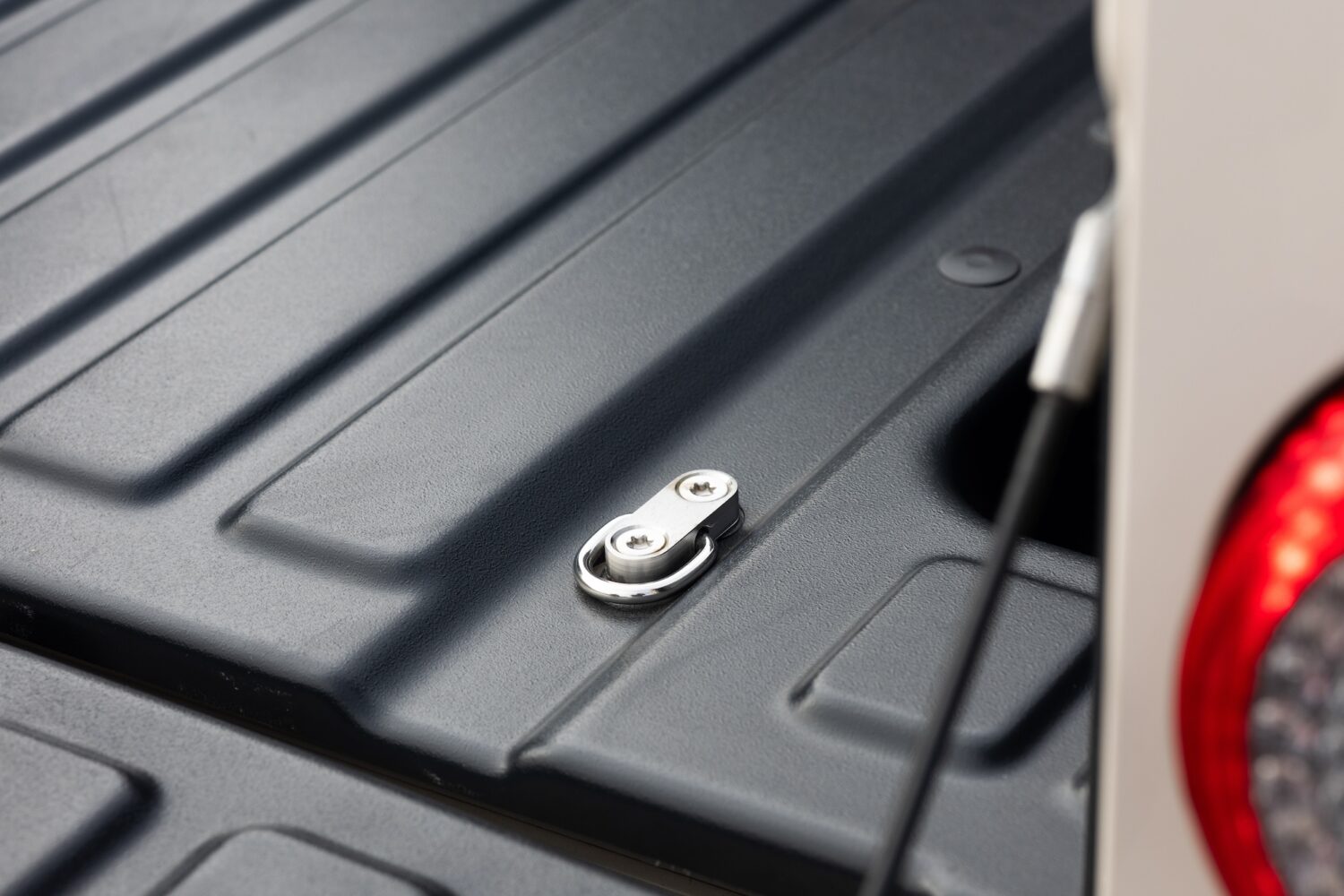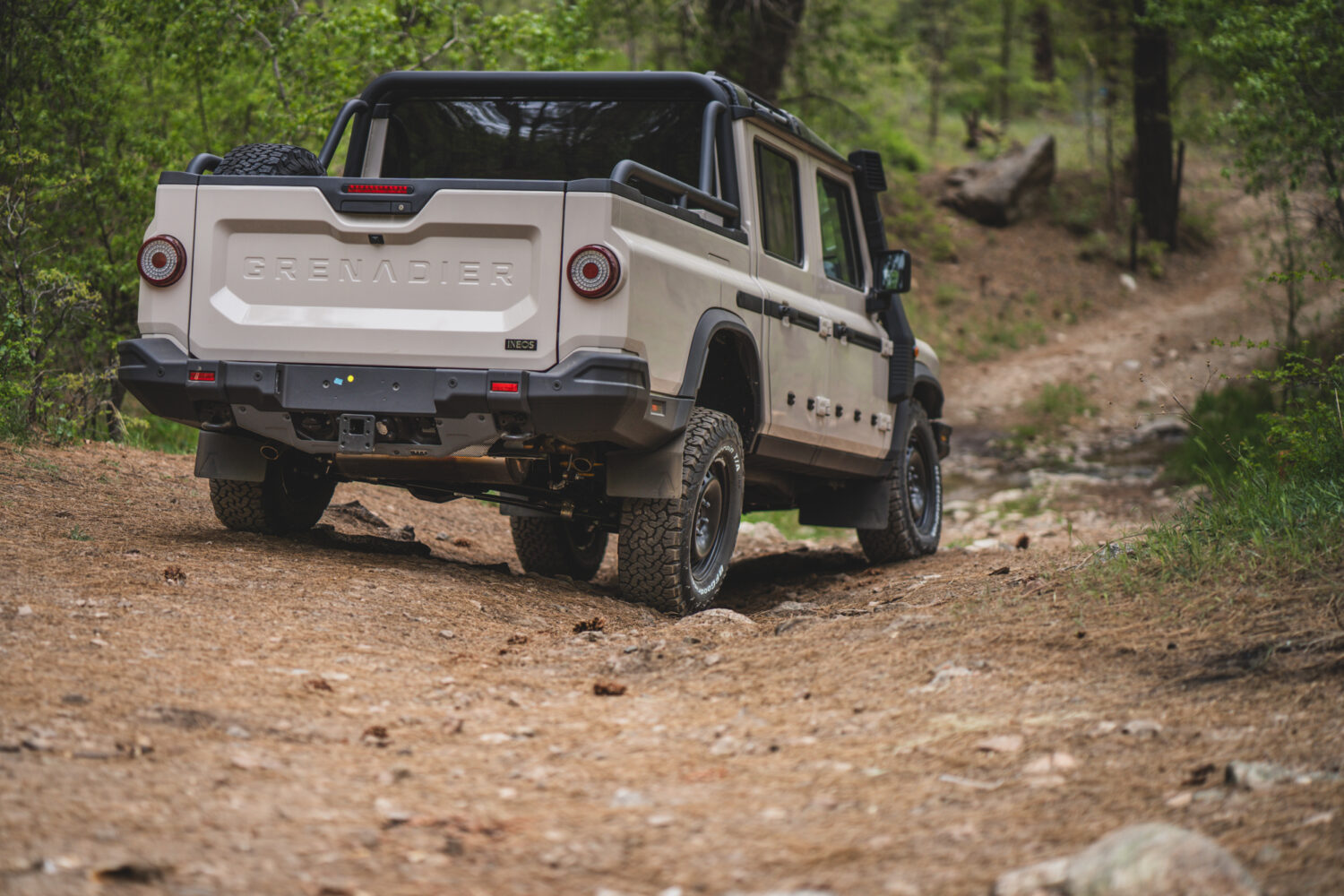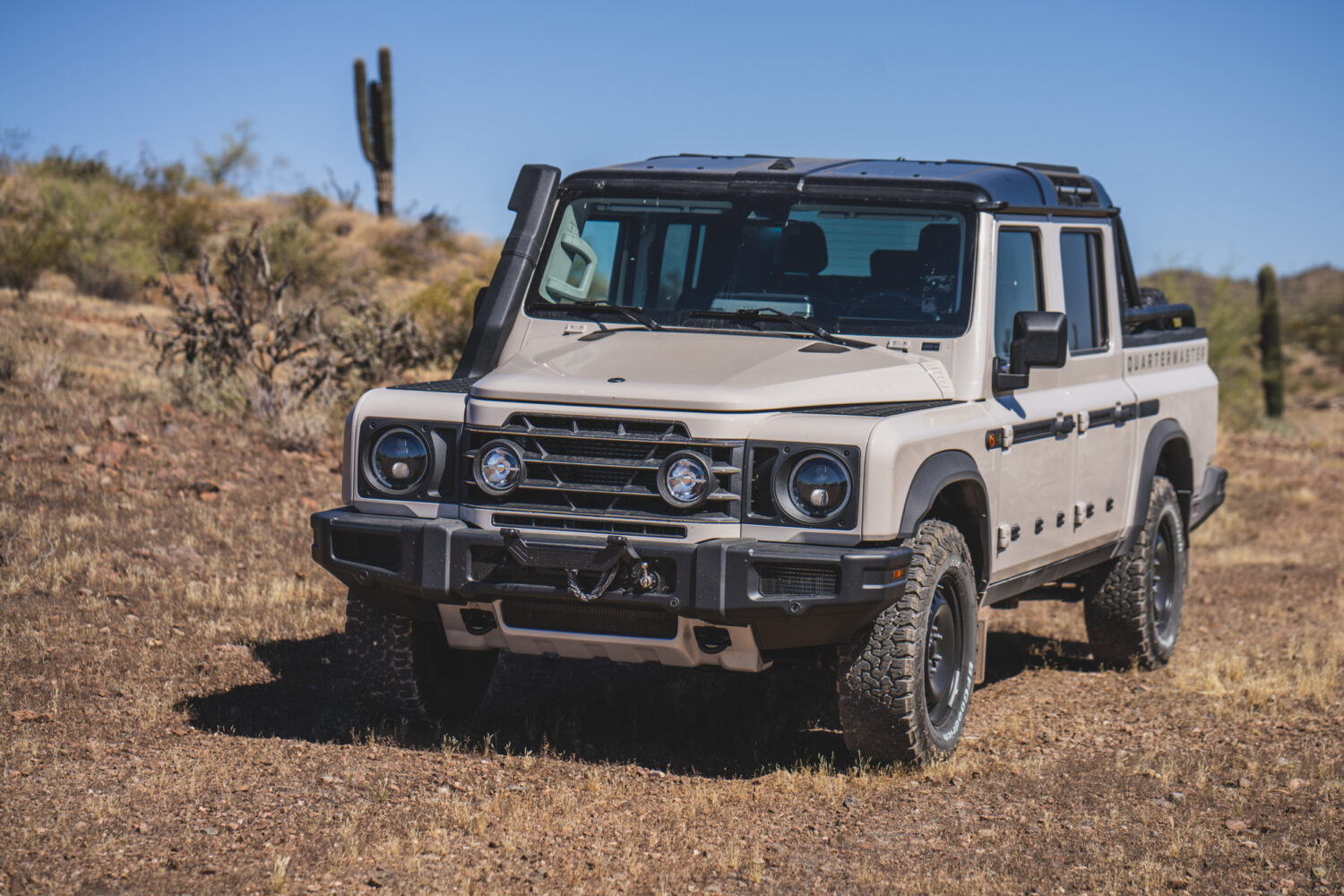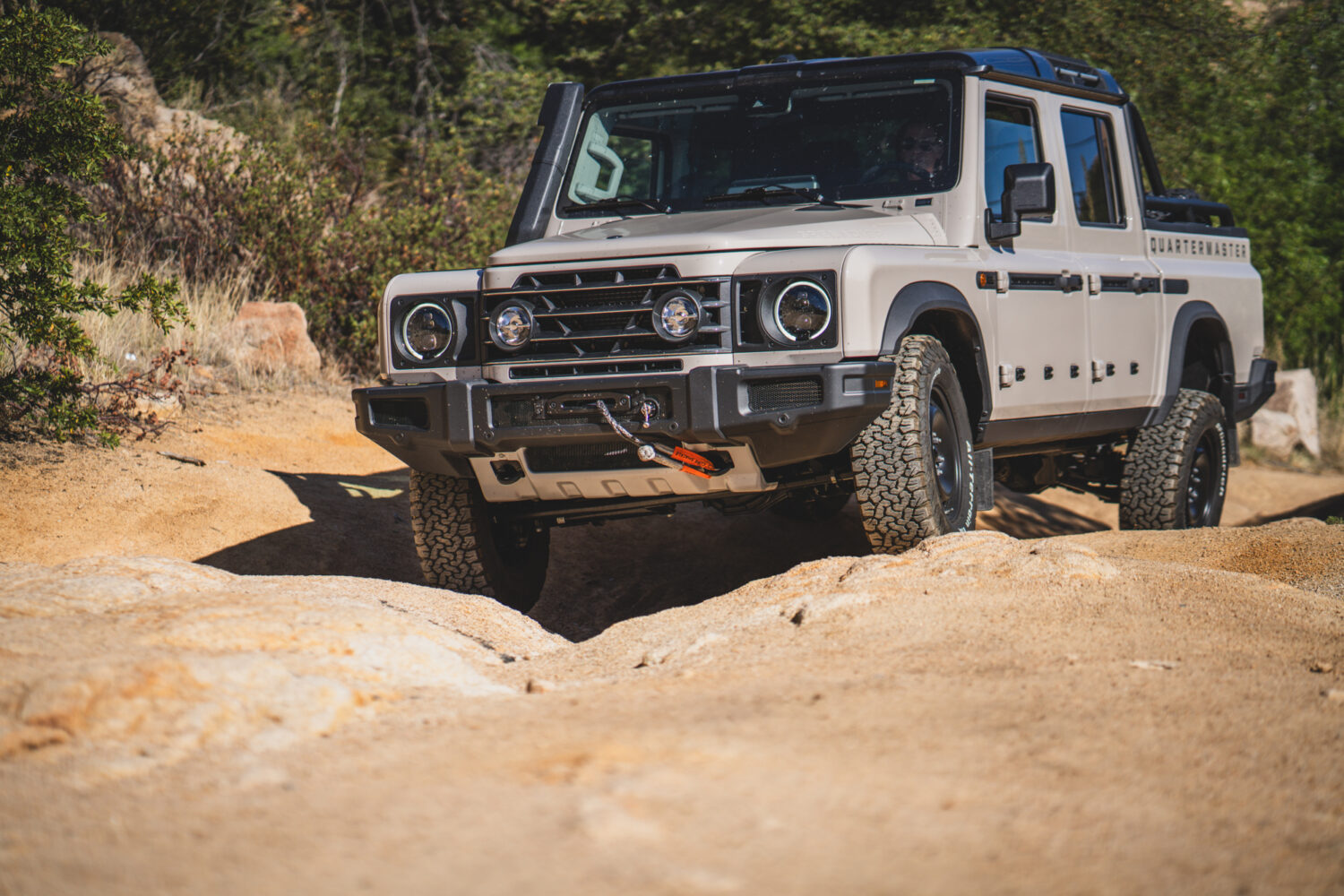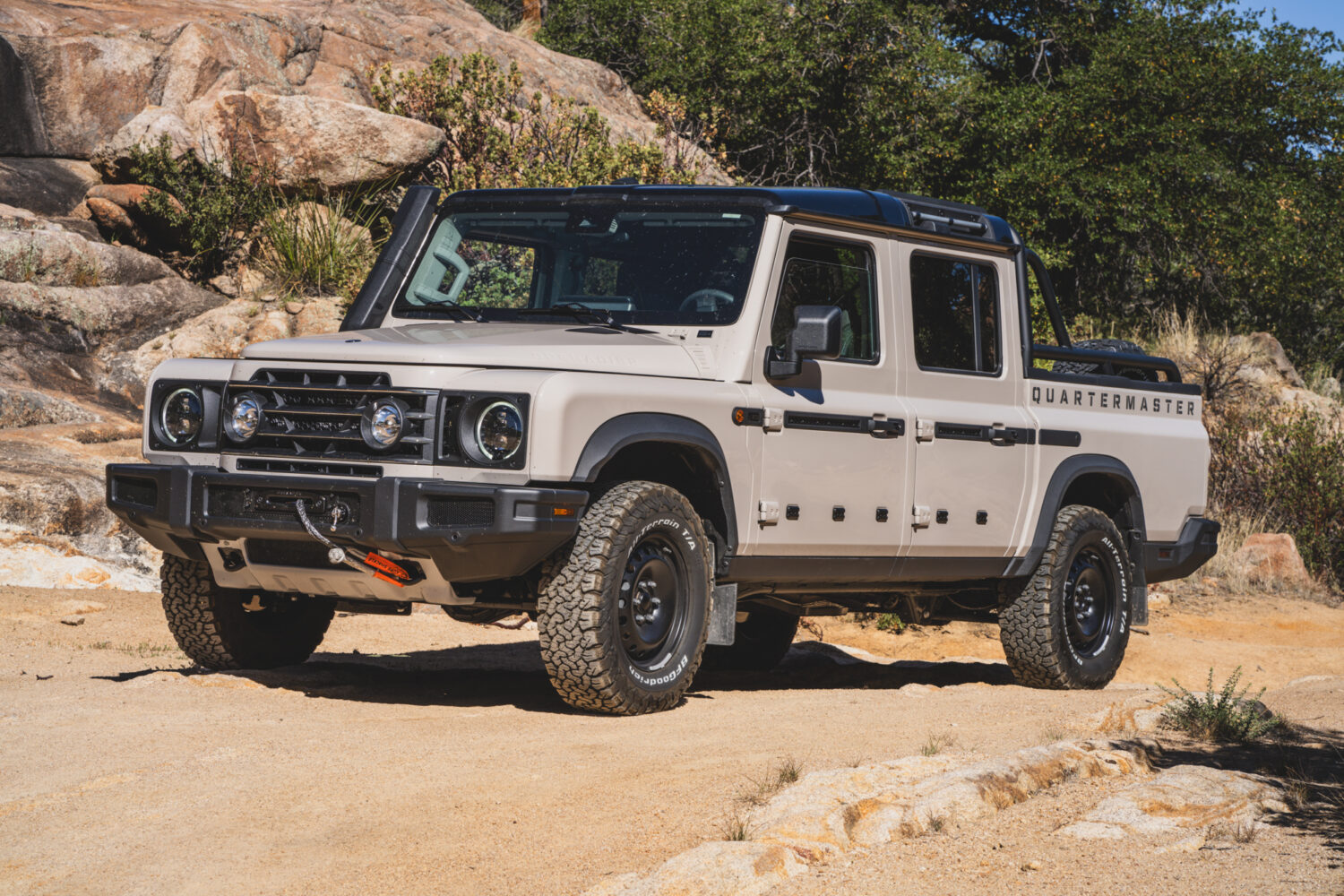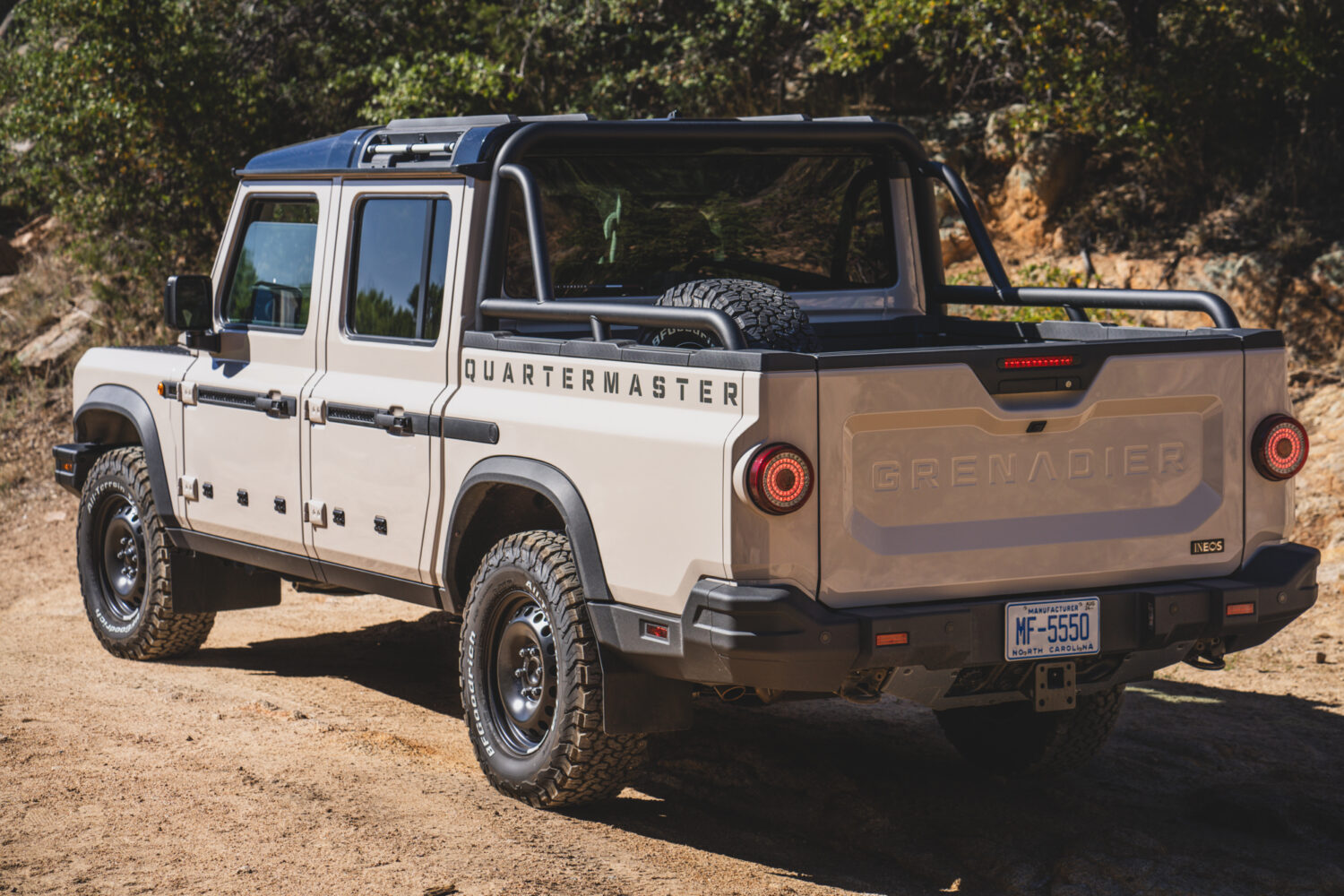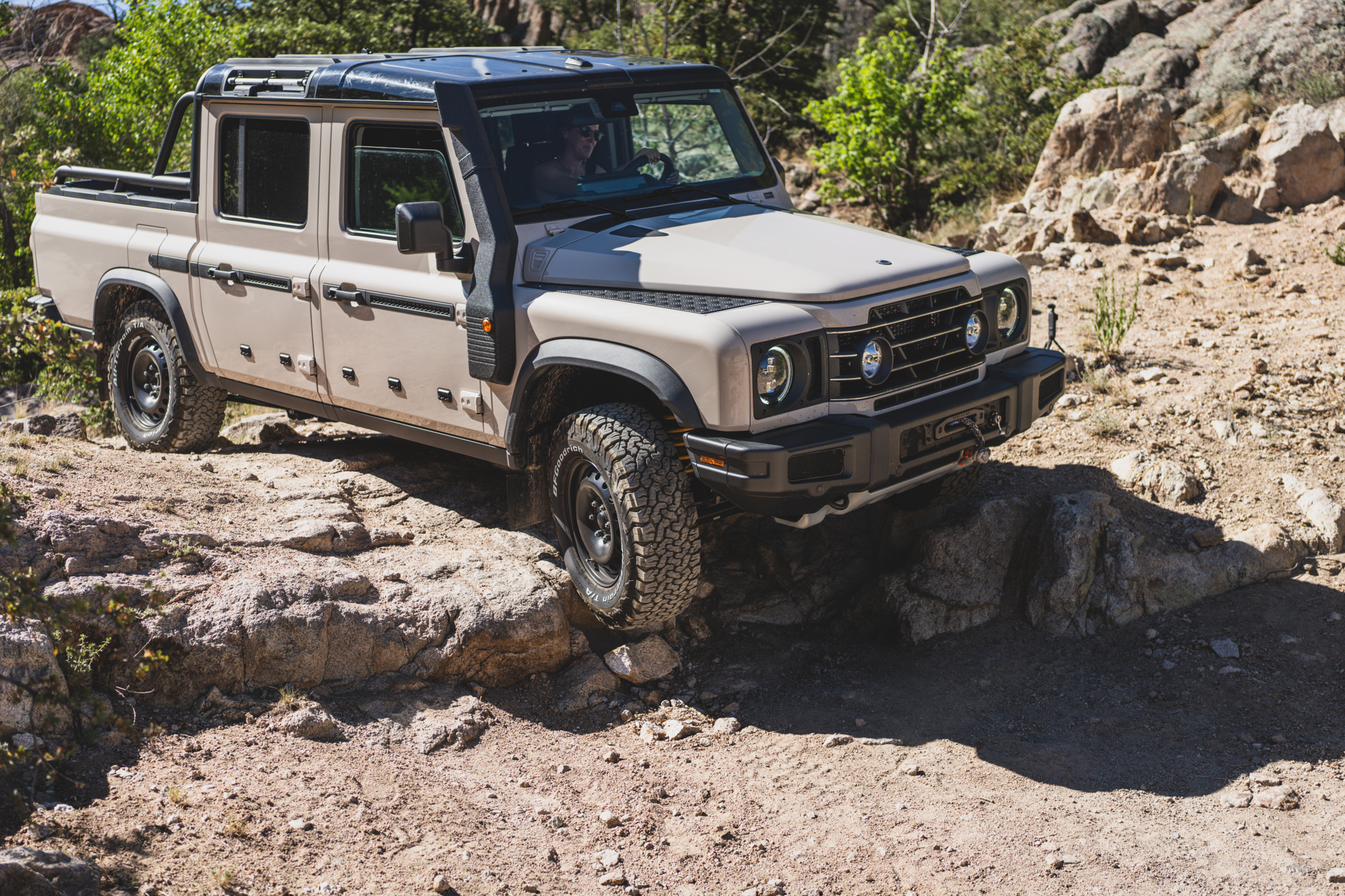After 25,000 kilometers, we rolled up to the Gulf of Aden. Yemen was just over the horizon, and the region was as close to all-out war as it had been in a generation. I had driven from Cape Town to Djibouti, crossing the continent of Africa and testing the limits of the Grenadier wagon in the process. When the tires hit the Indian Ocean, we had not experienced a single mechanical failure, and there were no error lights on the dash. Nothing had gone wrong despite the vehicle being an early production unit and the endless African corrugations trying to tear it apart. The Grenadier is a pinnacle overland vehicle, and the Ineos Grenadier Quartermaster is our choice for our 2024 project vehicle.
A few months later, I am now driving the new Quartermaster Trialmaster but in left-hand drive and on the North American continent. We were fortunate to have been given access to another long-term test unit and even to modify it if desired. The Quartermaster was a configuration I was particularly fond of, as I have always preferred Wagons for international travel and trucks for North American use. In Arizona, I find a pickup to suit my needs, be it hauling motorcycles or trips to Home Depot. Trucks work in the USA. However, because this is “truck country,” Ineos has its work cut out to produce a competitive model. Fortunately, they stayed true to their Built on Purpose ethos and forged their own path.
For this part one of the Quartermaster build series, we want to review the vehicle in stock form and give some insights into the stock performance and suitability for overland travel. The project is a Trialmaster package with several important options, like the factory winch, steel wheels, BFGoodrich ATs, dual-battery system, raised air intake, front and rear lockers, and more. This unit also included the factory bed bar (less important) and safari windows (more important). I love the safari windows, which allow for great ventilation, particularly when parked in the heat. On the wagon, we also removed the safari windows for game drives throughout Tanzania and Kenya.
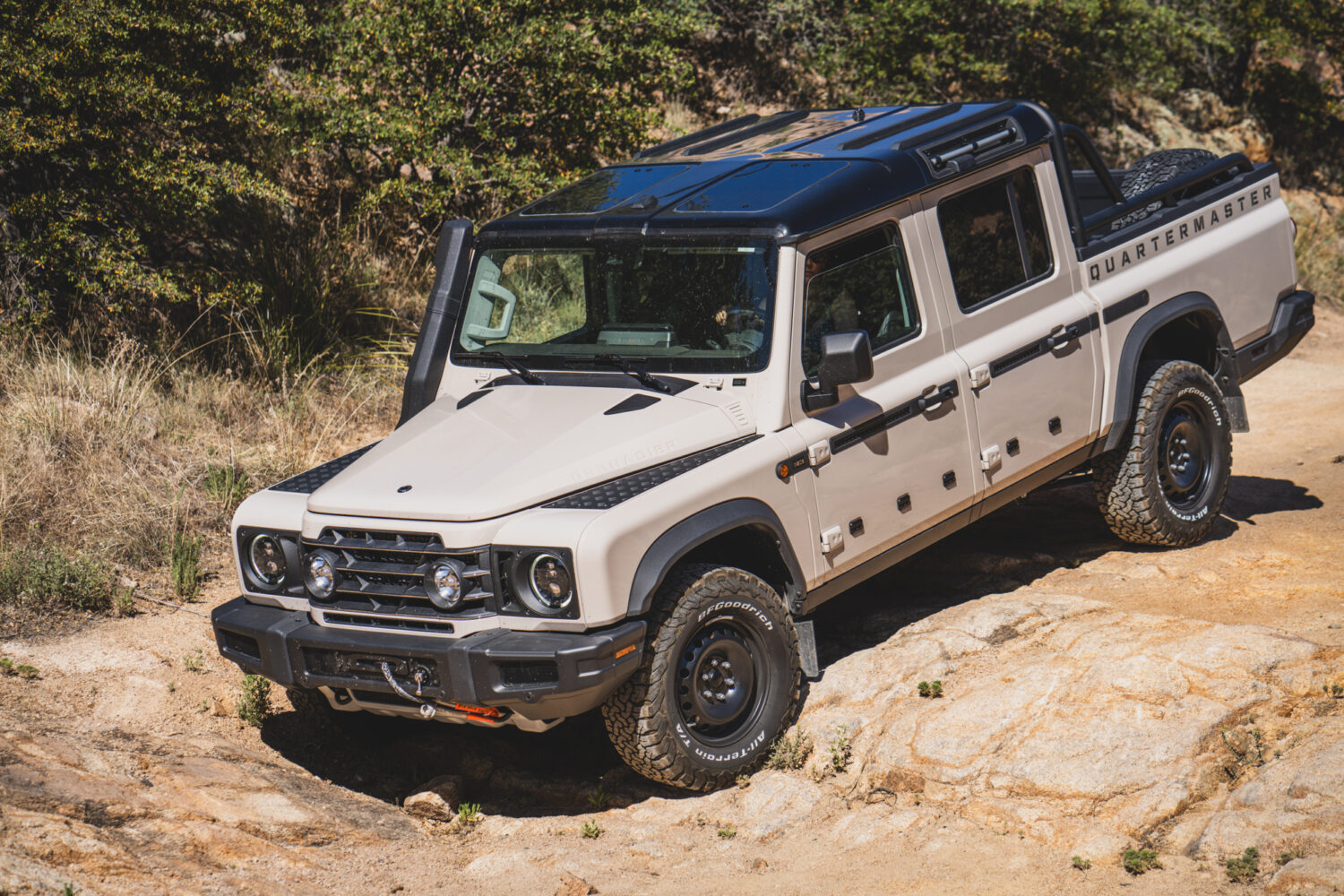
The Quartermaster is unique in a few ways, starting with the size. It is closer in dimensions to the first-generation Tundra, which makes it roomy for front-seat occupants but still manageable for most trails. The wheelbase is 127 inches, 4 inches shorter than a Tacoma and 10 inches shorter than a Gladiator. This improves breakover angle compared to its peers, four degrees better than a Gladiator, but the Jeep beats it on approach, departure, and turning circle. Given the effective dimensions, front and rear lockers, and long-travel solid-axle suspension, the capability is on par with the best in the segment.
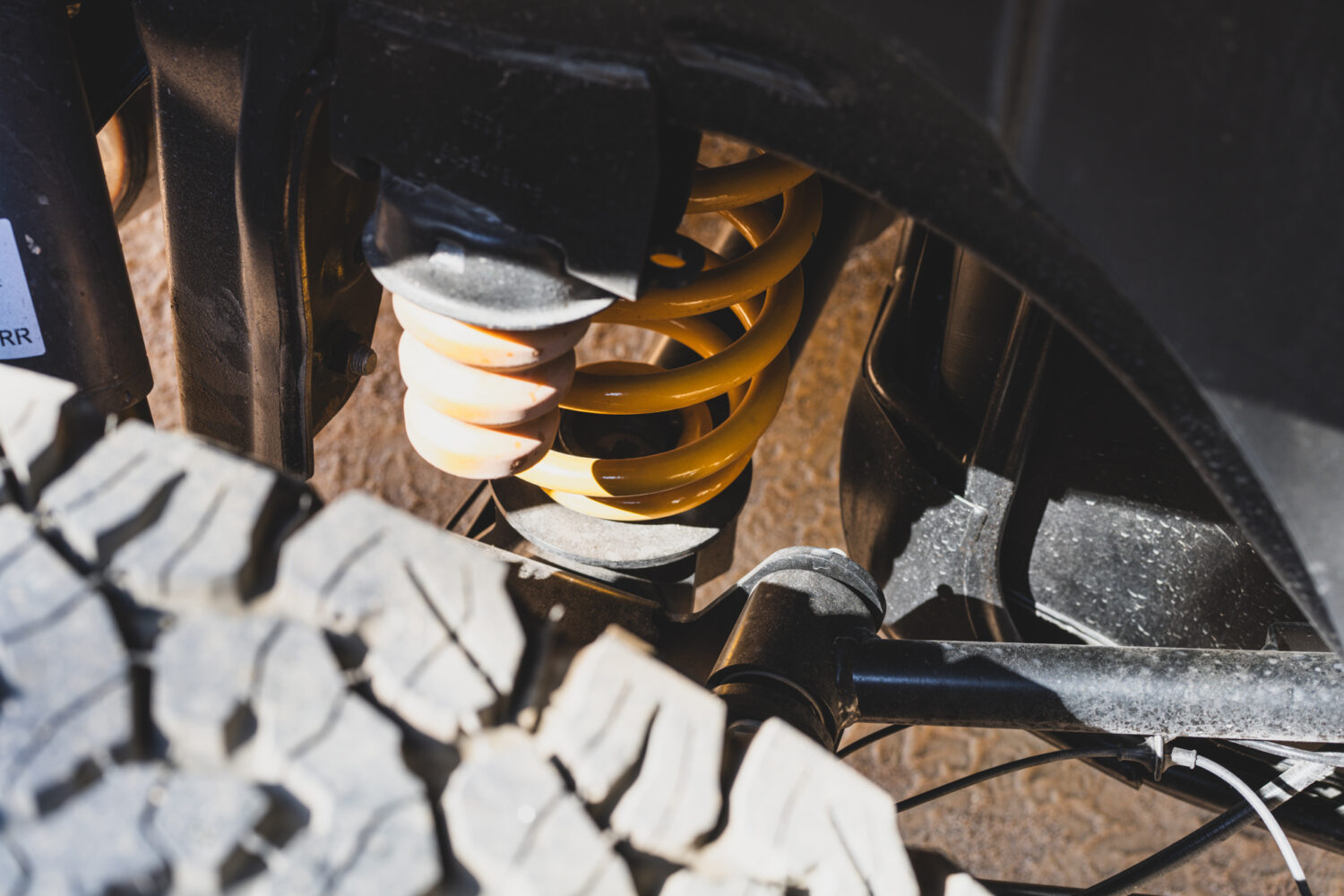
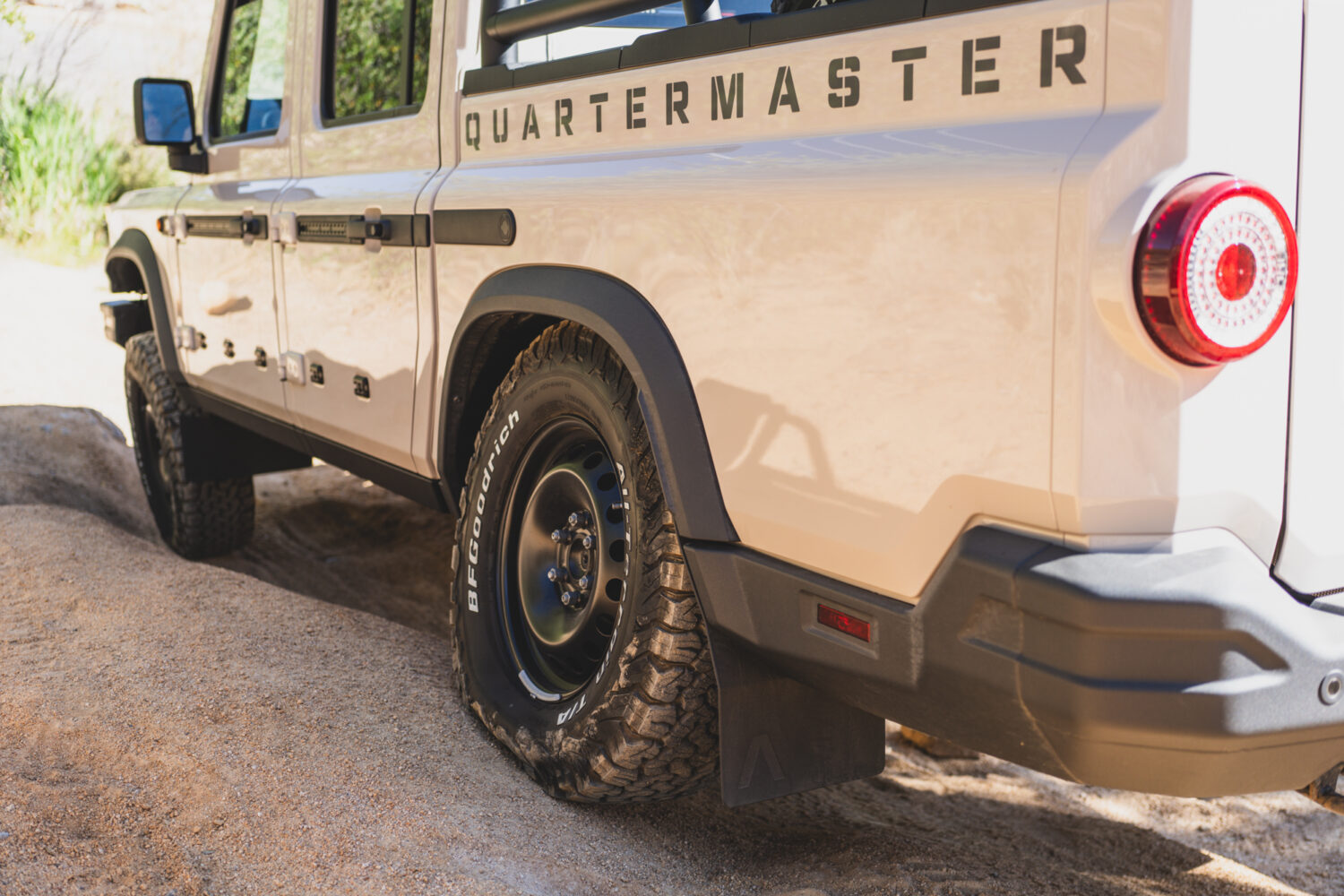
The Quartermaster shows its overlanding roots in capacity, where some configurations can reach 1,889 pounds of payload and a 7,716-pound tow rating. Even the Trialmaster we are testing has a 1,400-pound payload, and it is factory-loaded with a bed rack, safari windows, dual battery system, and the 12,000-pound winch. That is still enough payload to install a modest camper and bull bar.
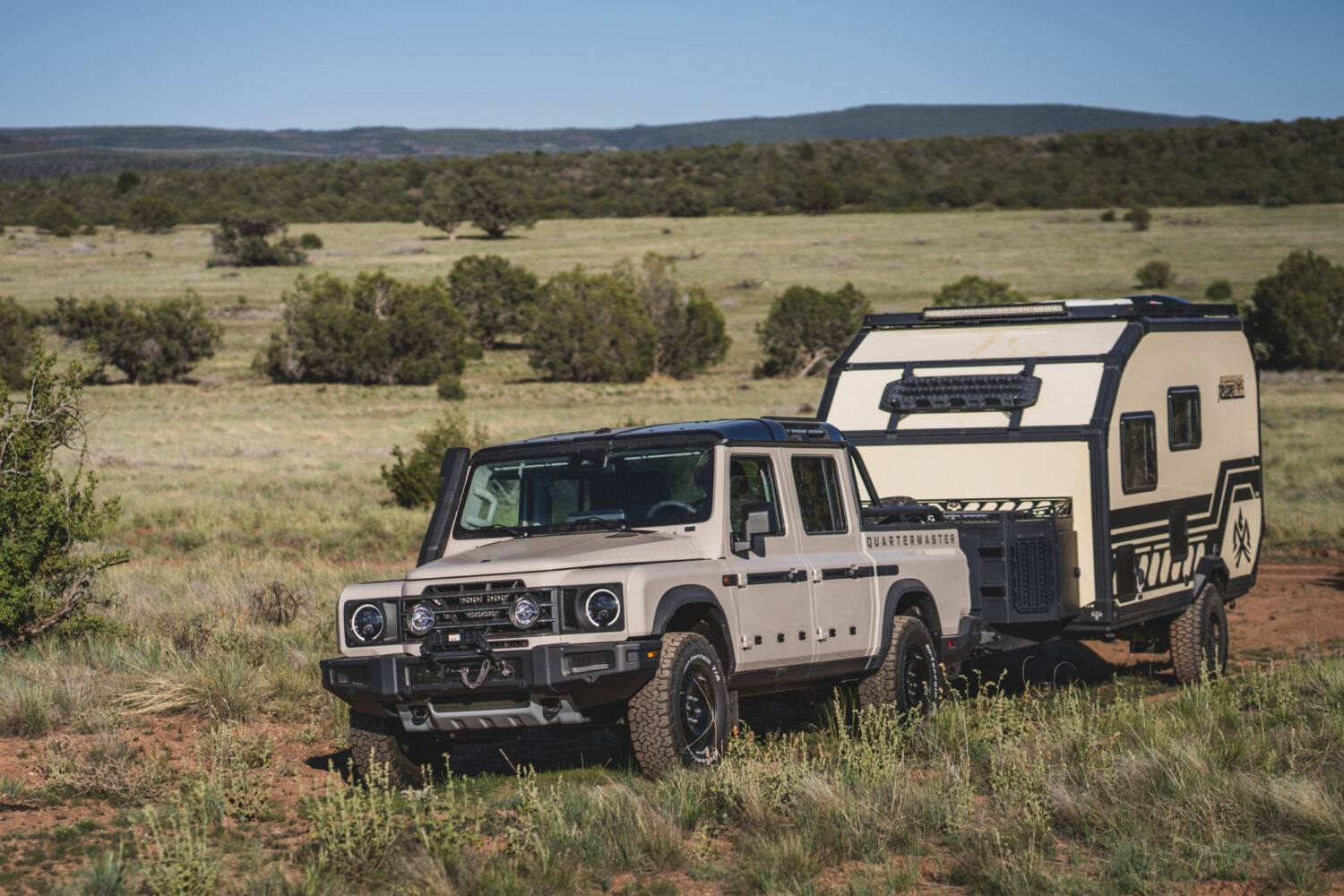
Our testing has even included pulling the 5,000+ pound Xplore X145 overland trailer.
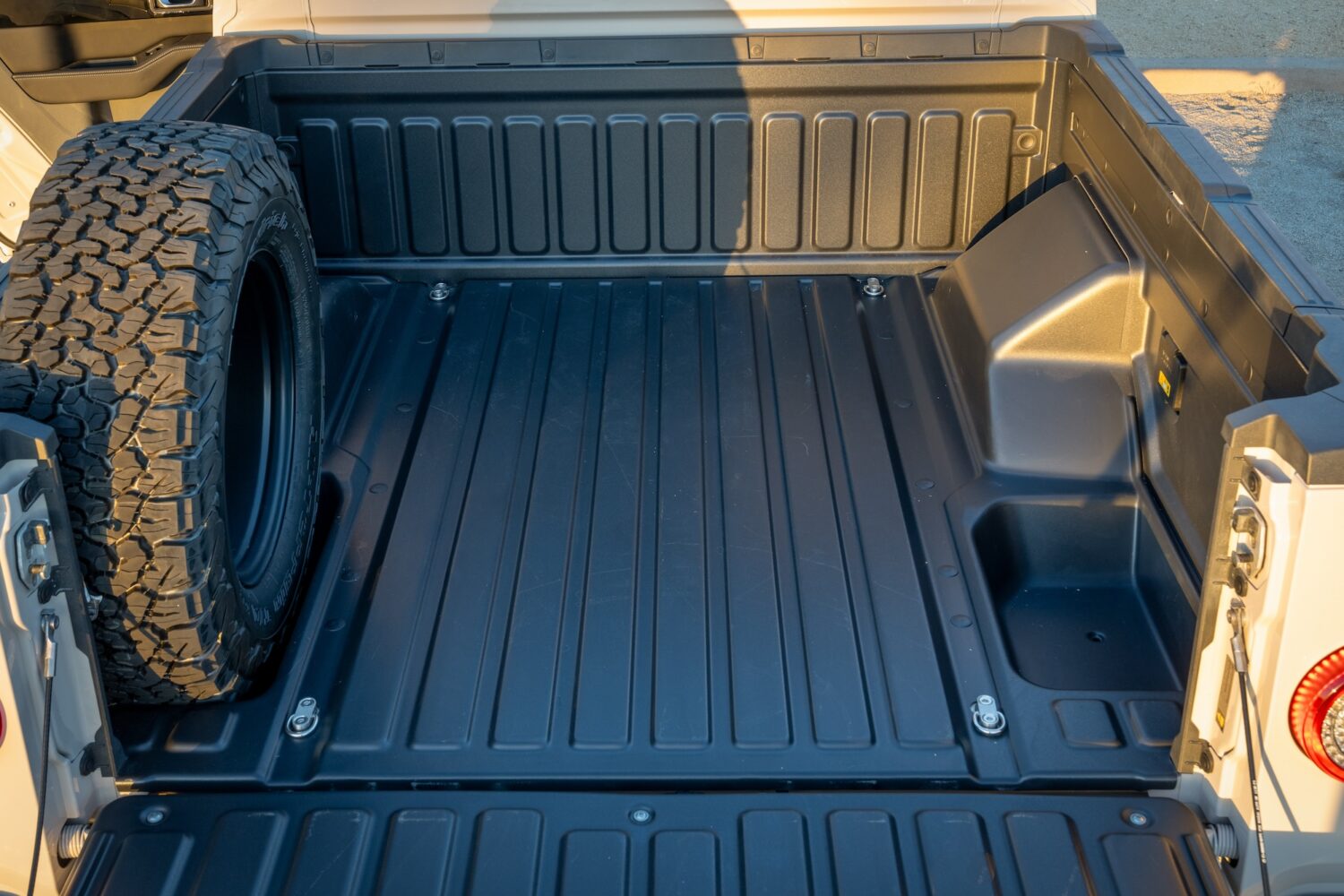
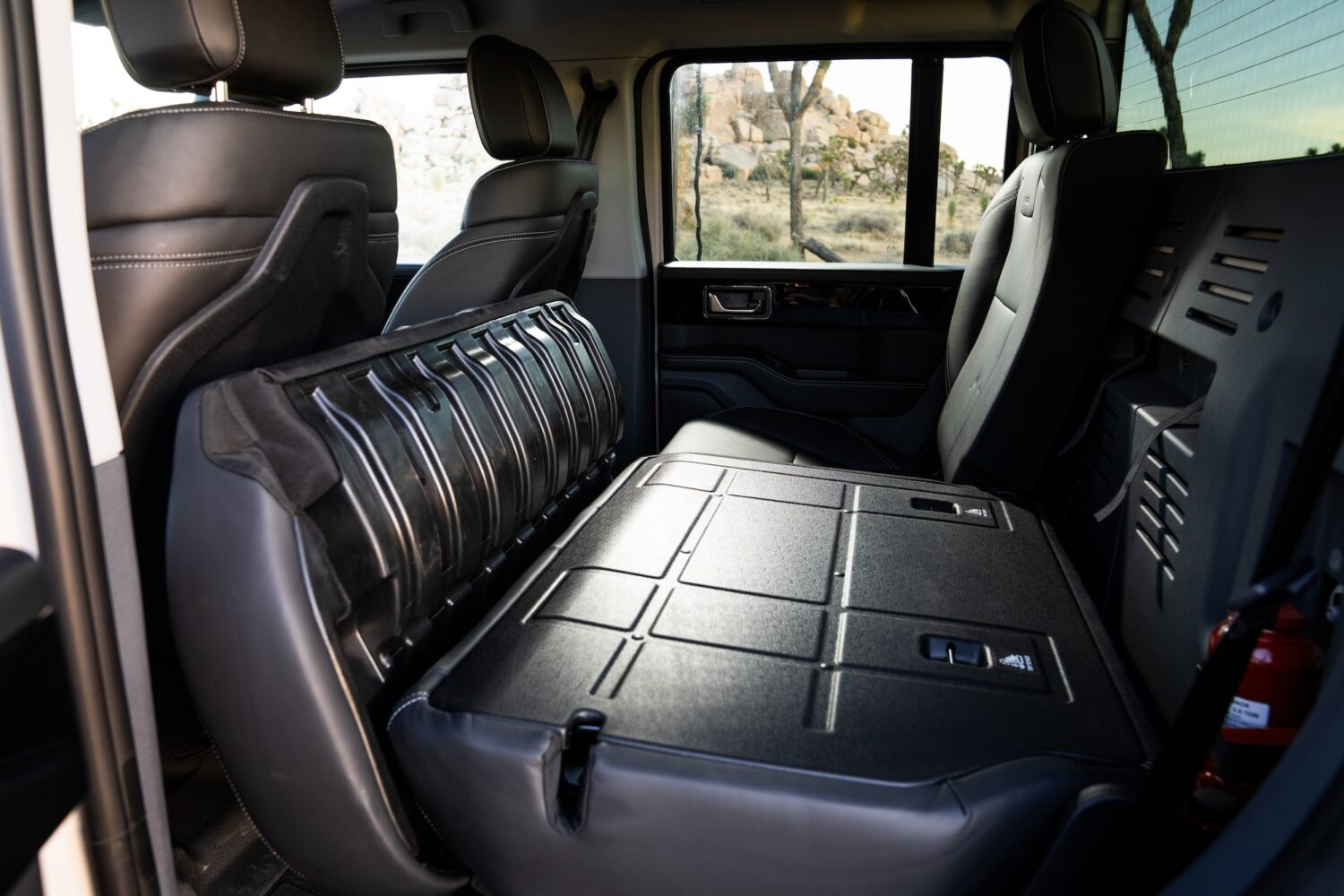
Storage volume is available in the rear seat area (a seat delete would be a clever solution) and the five-foot bed. Fortunately, the bed is wider than most in the segment. We will need to come up with a solution for the tire once a camper is installed.
On the road, the Quartermaster is even more comfortable and quiet than the wagon, and the truck benefits from a smaller cabin and longer wheelbase. It is easy to drive, but the robust chassis and solid axles make themselves known, with the benefits of both becoming more apparent on dirt roads or after decades of hard use. The high payload and long wheelbase increase the frame beaming effect over the wagon configuration (given the body interruption between the cab and bed). Expect it to drive like the HD truck it is and not a car, and it won’t disappoint. The suspension dynamics, steering feel, and ride quality are all familiar, reminiscent of my decade-plus owning a G-Wagon and multiple circumnavigations of the planet with 70-Series Land Cruisers. Do you want massaging seats, or do you want to drive across the Empty Quarter?
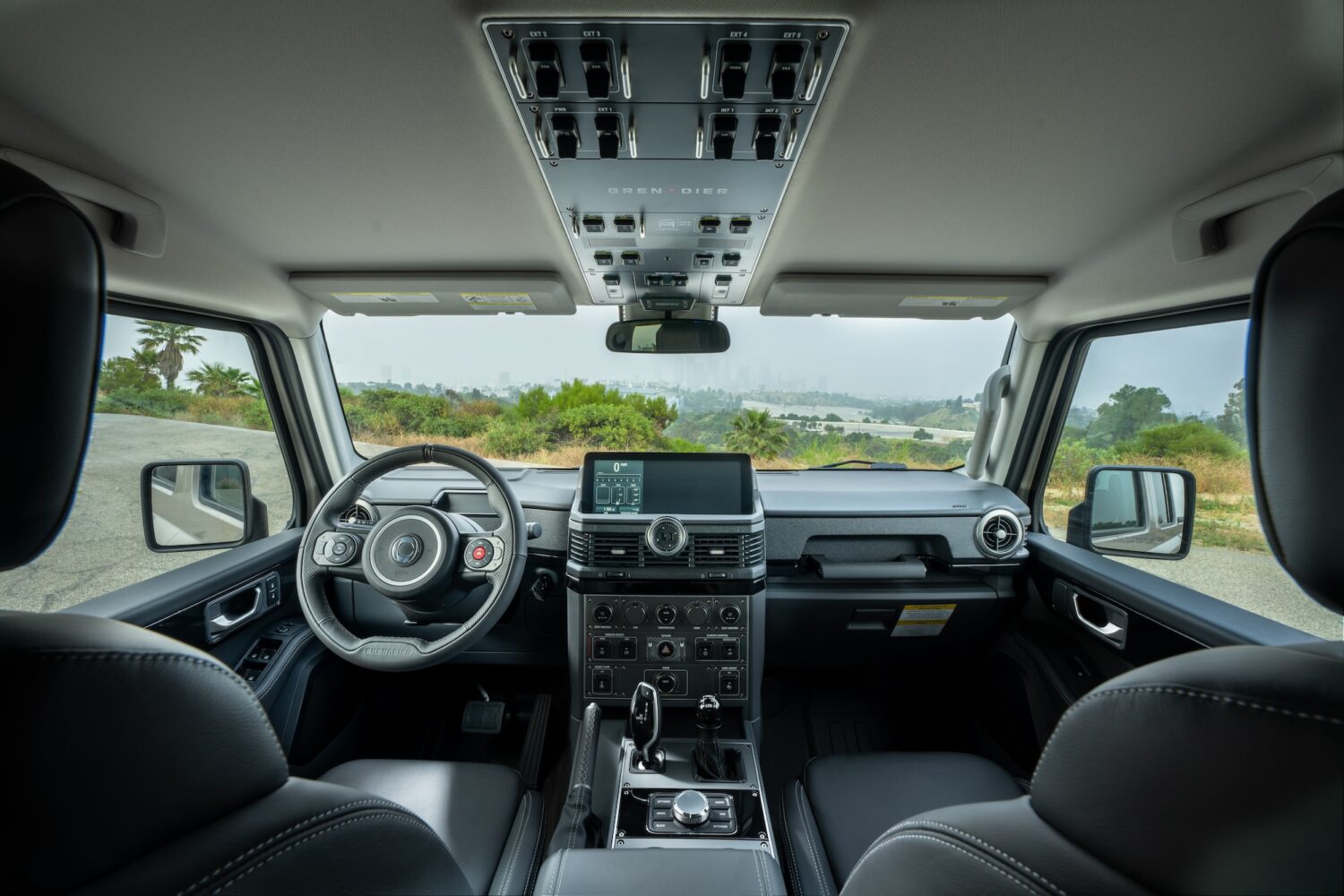
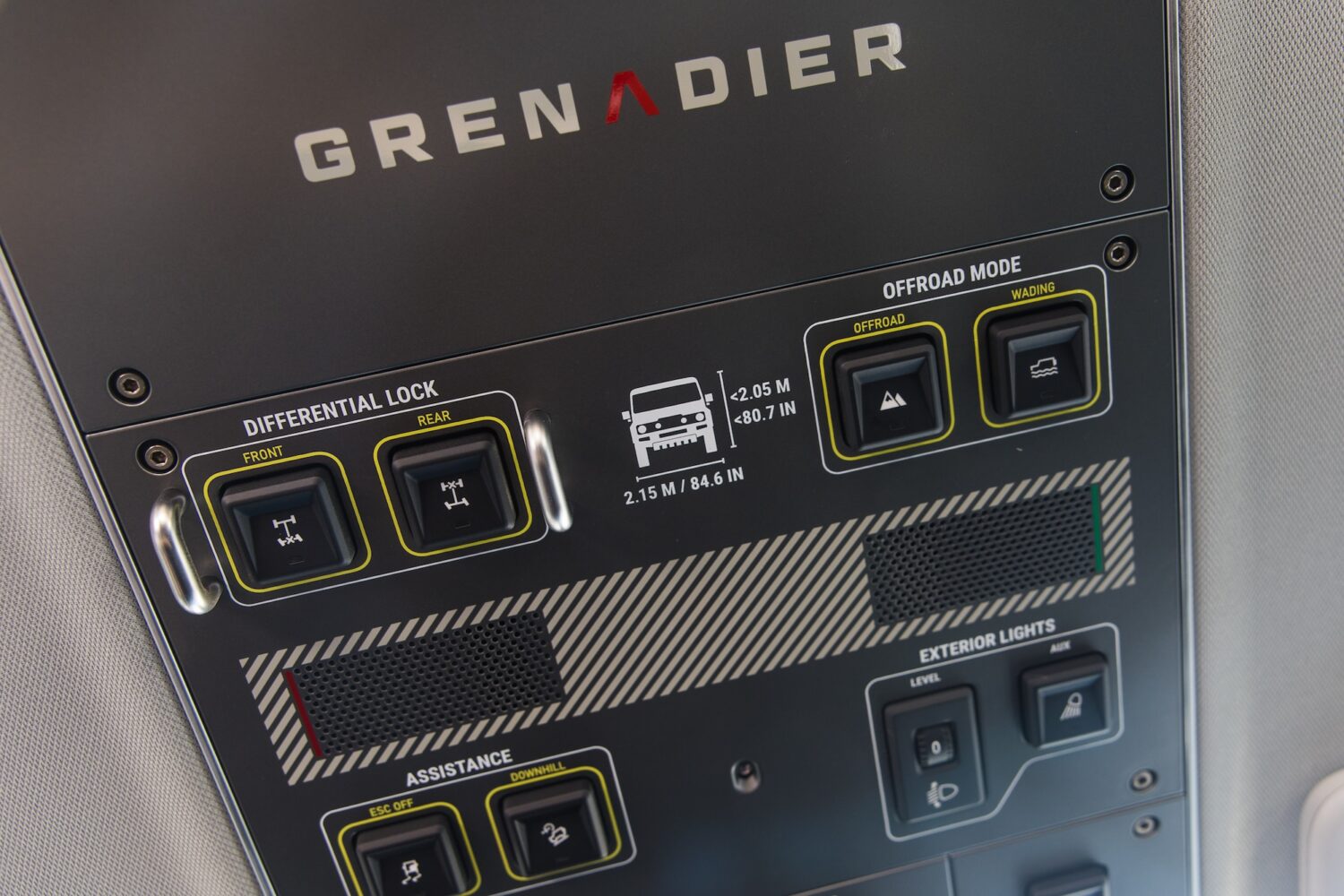
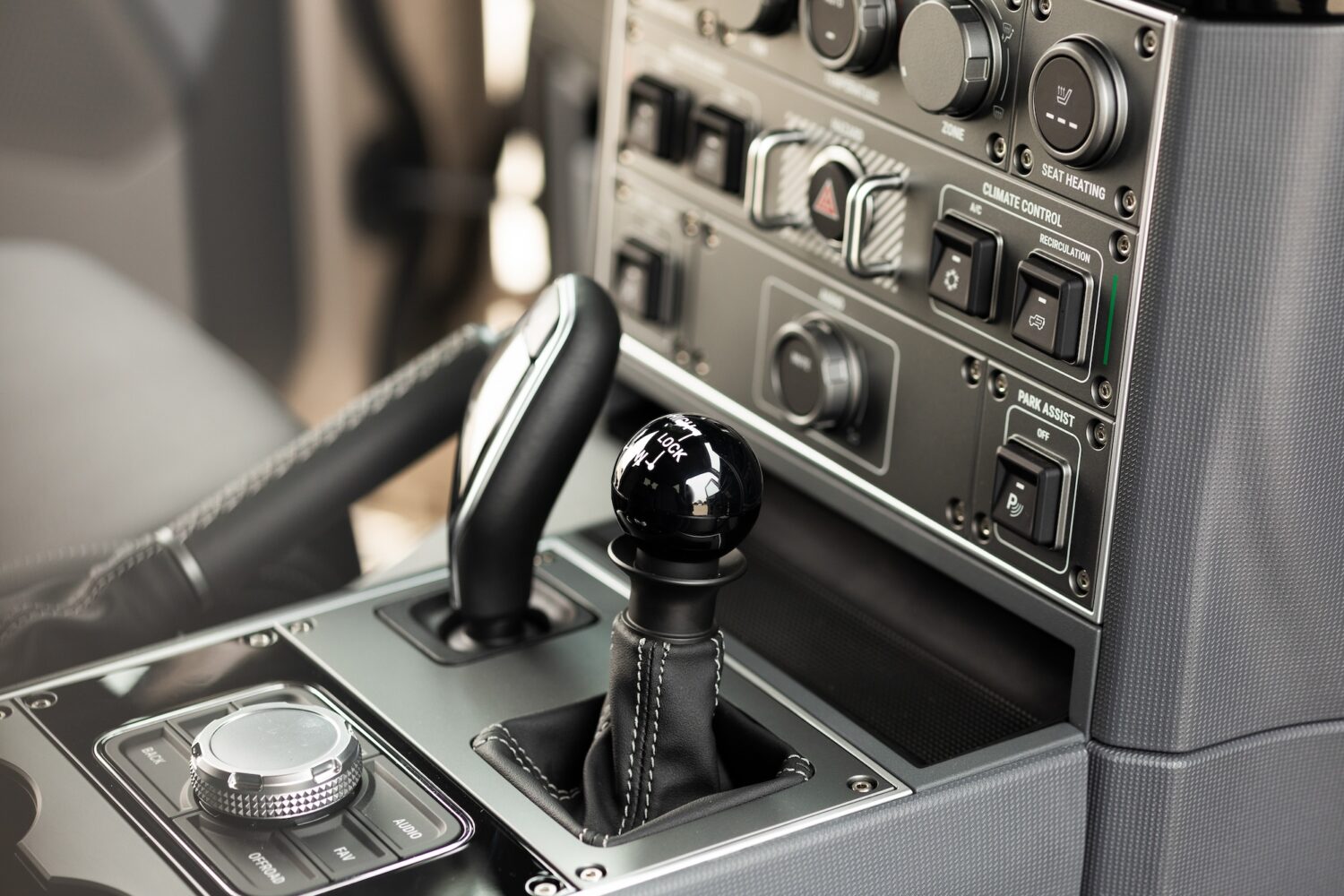
I like the classic and utilitarian interior. The center-stack speedometer takes a few minutes to get used to, but now, after driving Grenadiers for nearly six months, I realize that it is second nature.
The BMW B58 straight six is a good fit for the vehicle, the 331 lb. ft. of torque well-matched to the ZF eight-speed transmission. Where I live in Prescott, AZ, it is over 5,200 ft, so the turbo configuration does an admirable job of maintaining performance at elevation. This motor has been around for nearly a decade, winning Ward’s 10 Best Motors awards four times (2016, 2017, 2019, 2020). Any of my reliability concerns were quelled once I read that Toyota uses the same motor in their Supra. It is also detuned for durability and longevity (and even lower octane in a pinch) compared with other applications (like the BMW CSL), where the B58 makes an unimaginable 560 hp. After crossing Africa and not experiencing any motor issues (even on as low as 85 octane in Ethiopia), I feel comfortable with the INEOS Quartermaster overland project reliability prospects.
On dirt trails and roads, the Quartermaster comes into its own, boasting standard front and rear steel bumpers (try and find that elsewhere), bash plates, and a fuel tank skid. The Trialmaster we are using levels up with the winch, raised air intake, triple locking differentials, steel 17-inch wheels, and 32-inch diameter BFGoodrich AT KOs. Another surprise is the cable-operated transfer case lever with a 2.5:1 low range. When combined with the 5.2:1 first gear, low-speed control on the trail is excellent, made even better with left-foot braking. In the sand, the best option is to lock the center differential and select off-road mode on the overhead console. This opens up the VSC limits and keeps the throttle from being cut during more spirited dirt driving or in the dunes. In slower speed conditions, off-road mode makes traction control even more effective, limiting wheelspin. The rear and front lockers can be engaged in the most technical scenarios and climbs.
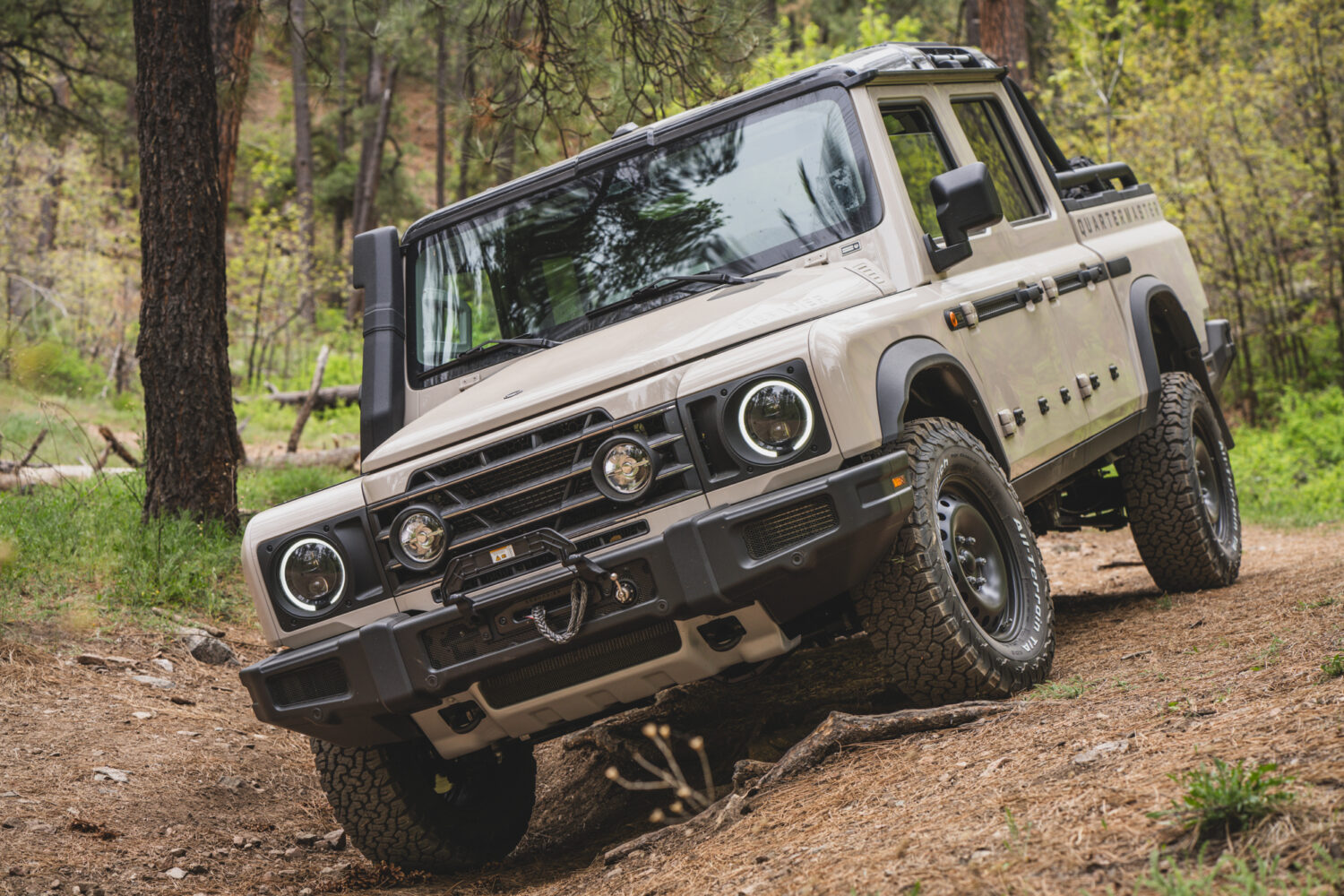
The Quartermaster is an ideal and unique overland truck platform, and the aftermarket accessory manufacturers will follow suit. My wish list is short, but I would like to see a larger factory main fuel tank option. The US government’s chicken tax is also unfortunate, adding an unnecessary 25% hit to the MSRP. As a traveler who prefers the remote and rugged corners of the globe, the Quartermaster feels like manna from heaven, and I can scarcely think of another vehicle I would rather build as a project vehicle. Because it fits overlanding, Overland Journal, and my needs, we have decided to make the INEOS Quartermaster our 2024 overland project truck of the year. Follow along as we venture through build phases one, two, and three. The first will be a modest upfitment similar to the Grenadier Wagon we prepared for Africa, then enhanced off-road capabilities for phase two, and finally a camper installation for phase three. Few of us could have imagined that a vehicle like the Quartermaster would ever be made in 2024, let alone be available to purchase in the USA. It feels good to soak up the new golden age of overlanding.
ineosgrenadier.com | Starting at $86,900
Editor’s Note: We receive no financial compensation from Ineos for this project build or the Africa crossing. Both vehicles are long-term editorial test units.
Read more: INEOS Grenadier Build for Crossing Africa: Detailed Walkaround Video
Images: Scott Brady
Our No Compromise Clause: We do not accept advertorial content or allow advertising to influence our coverage, and our contributors are guaranteed editorial independence. Overland International may earn a small commission from affiliate links included in this article. We appreciate your support.
Ineos Grenadier Quartermaster Overland Project Expanded Gallery:
